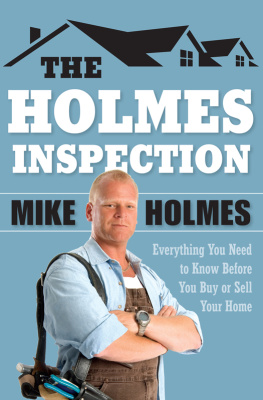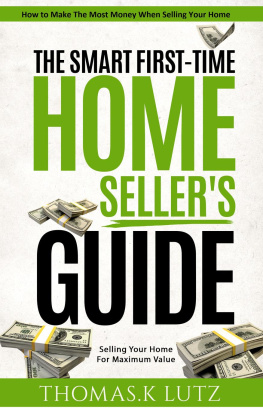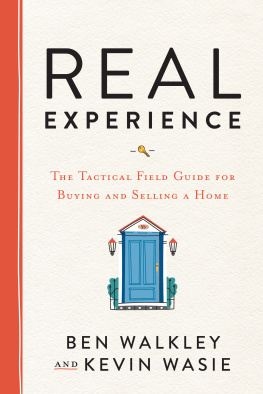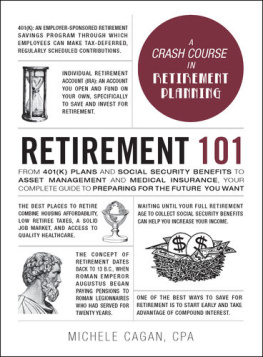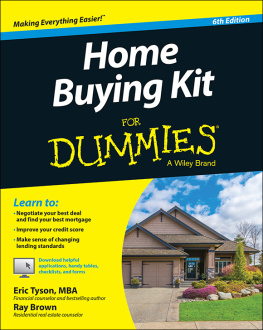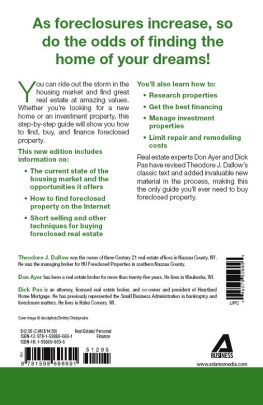

Contents
To my husband, David, without whose patience, support, and
slow-braised short ribs this book would never have been written
Preface
A REAL ESTATE EXPERT I KNOW SAYS THAT INVESTING IN REAL ESTATE IS an exercise best left to the professionals. Mere homeowners, he says, should be satisfied with the mortgage deduction and leave it at that. And after seeing the downdraft in home prices over the last couple of years, many folks may be inclined to agree. I am not one of them. My view is this: anything that commands 30 to 35 percent of my income month in and month out had better give me a decent return for my trouble!
If you feel the same way, then Home Rich is for you. This book focuses on making your home a solid investment. In the coming pages, youll learn how to analyze your own financial situation to determine how much house you should buy, whether upgrading makes sense financially, and how to save money when it comes time to sell. Ill introduce you to the single most important number for home ownersno, not home price, but home equityand show you how to grow yours. Youll see firsthand how successful homeowners have transformed their primary home into a lucrative investment and what it takes to cash in that investment when you sell.
This process is far from intuitive and takes extensive planning. While your parents may have been able to rely on inflation to double or triple their initial investment todays homeowners have to be savvier. In fact, the biggest threat to their investment isnt the market, its the fact that they will stay in it a far shorter time than their parentsjust nine years on average. That means that you have to view your home as a medium-term investment rather than a long-term one. But this challenge can be met, and Home Rich is your trusted guide as you go through this sometimes difficult process.
While most books focus simply on buying and selling, Home Rich takes readers through the whole life cycle of homeownership. After all, even if you buy a terrific house, youll have to maintain it well over your years of ownership or risk losing the advantage of your savvy initial choice. Youll learn about the critical steps to take in managing and upgrading your home, transforming it into one that will not only attract the next buyer but also be a warm and inviting environment for your family. Thats because every successful real estate investment must also be a home as well.
The Rules
WHEN GREG WAS TRANSFERRED TO WASHINGTON, D.C., HIS WIFE, STACEY, knew immediately she wanted to move to Fairfax County, Virginia. Her family had lived in the area for years and the commute into Washington was a breeze. Unfortunately, the couple had to start their search right in the middle of the spring buyers frenzy and were competing with other families eager to get into a new home before the school year started. Soon after their search began, they discovered a neighborhood that boasted a pool and tennis club that residents automatically belonged to. And, days later, the couple walked into an open house for a cozy ranch with skylights and new carpeting in every room. The only downside was a strange mildewy odorbut the sellers assured them they had taken care of the problem. The pressure to move quickly was high. Seven other couples at the open house were eager to buy. Greg and Stacey decided they would have to put together a strong offer quickly to compete. They bid the asking price of $669,000. Stacey even wrote a thank-you note to the owners to improve the chances of their bid being accepted. The price tag was a little more than they had anticipated spending, but the two agreed they could afford their prize if they kept their spending on extras to a minimum. They won the bidding war, but just a month after they moved in, they discovered that the mildewy odor was a symptom of a much bigger water problem: water soaked the basement carpet. They gutted the room down to its studs and installed a new drainage system, as well as a new carpet, wainscoting, and furniture. But that was only a prelude to the problems created a year later by a massive rainstorm.
At five oclock on a Sunday morning I heard water running, Stacey recalls. I went downstairs, and it was like a levee had brokenthere was water coming through the wall, up from under the floorboards, everything. Greg and Stacey worked like a bucket brigade emptying the house of water. More renovations ensued.
In the first two years of owning the house, they had to replace several skylights, fix leaky soffits, and excavate the backyard to install French drains. The price taga total of nearly $36,000was sizeable and unexpected. Because the two were stretching to buy the house in the first place, they had little room in their budget to finance the repairs. Greg tapped his retirement fund to pay for the biggest repairs, but the problems left the family strapped. Had the two been in less of a rush and hired an inspector, they would have been spared the setback.
Compare their situation with that of Ted and Barbara. At the time the two decided they had outgrown their Queens, New York, condo, the market couldnt have been more hostile to buyers. Prices were on the rise in Westchester County, where they had decided to move. Attractive homes were drawing multiple bids and bidding wars. If ever there were a time for buyers to hold up and wait, this was it. But the couple came up with a strategy that allowed them to find a home that fit their needs yet didnt break their budget.
They started by investigating neighborhoods. They quickly ruled out the most expensive ones, such as Scarsdale and Bronxville, where competition was the most heated and the potential for overbidding high. And they knew they didnt want to move too far away from their jobsTed worked in Queens, while Barbara worked in Manhattan. When Teds boss suggested they check out his commuter town, Sleepy Hollow, they liked what they saw. Prices in the town were high but not stratospheric. When they found a quaint bungalow with some maintenance issues, they pounced. Exterior paint was peeling and interior hardwood floors had been badly damaged by renters. The kitchen hadnt been updated in years. Rhododendrons had been allowed to grow nearly to the eaves, and the overall appearance from the outside caused many potential buyers to drive past without even seeing the interior. After confirming the house had no structural issues, the two decided to buydriven mostly by the idea that the house was well priced for the neighborhood at $475,000. Because the two were able to purchase the house at such an attractive price, they could spend money on upgrades. They had the cramped kitchen stripped out and updated with roomy oak cabinets and stainless-steel appliances. They repainted the house, warming up rooms with rich colors to replace the faded creams and whites. The floors were refinished. The exterior was painted a sophisticated gray-green and the shrubs trimmed or removed altogether. Within a few short months of buying, the house was transformed. We were enthusiastically welcomed by our neighbors, said Ted. Most commented they really had never been able to see just how beautiful the house was beneath all those overgrown shrubs. One neighbor even said she would have bought the house long ago had she known what was hidden beneath. Thats a great feeling.
After the two had completed the transformation of their home, they set their sights on a real eyesore house in the neighborhood to buy, fix up, and sellan investment they never would have been able to even consider had they not bought so advantageously in the first place.
Next page

